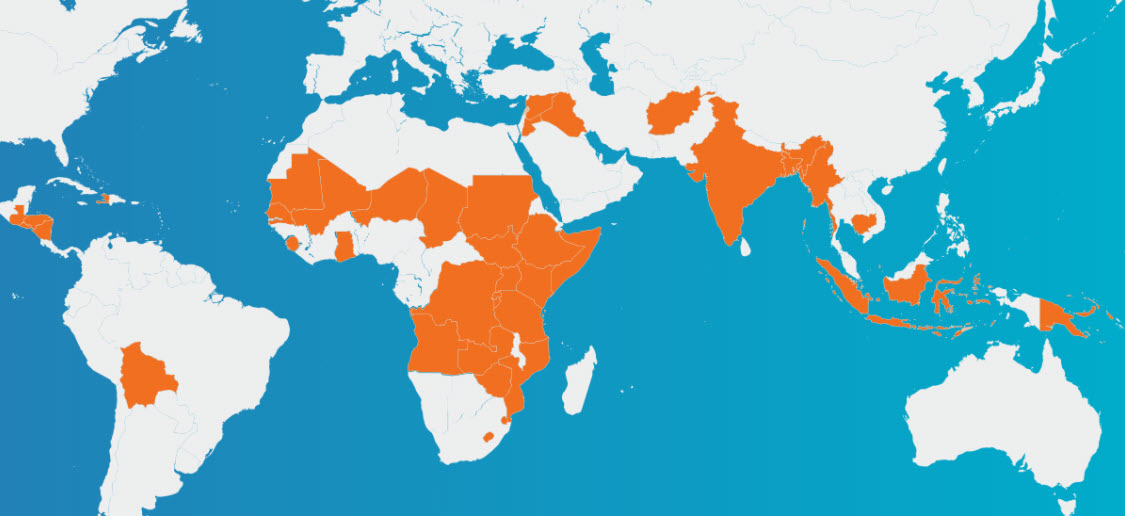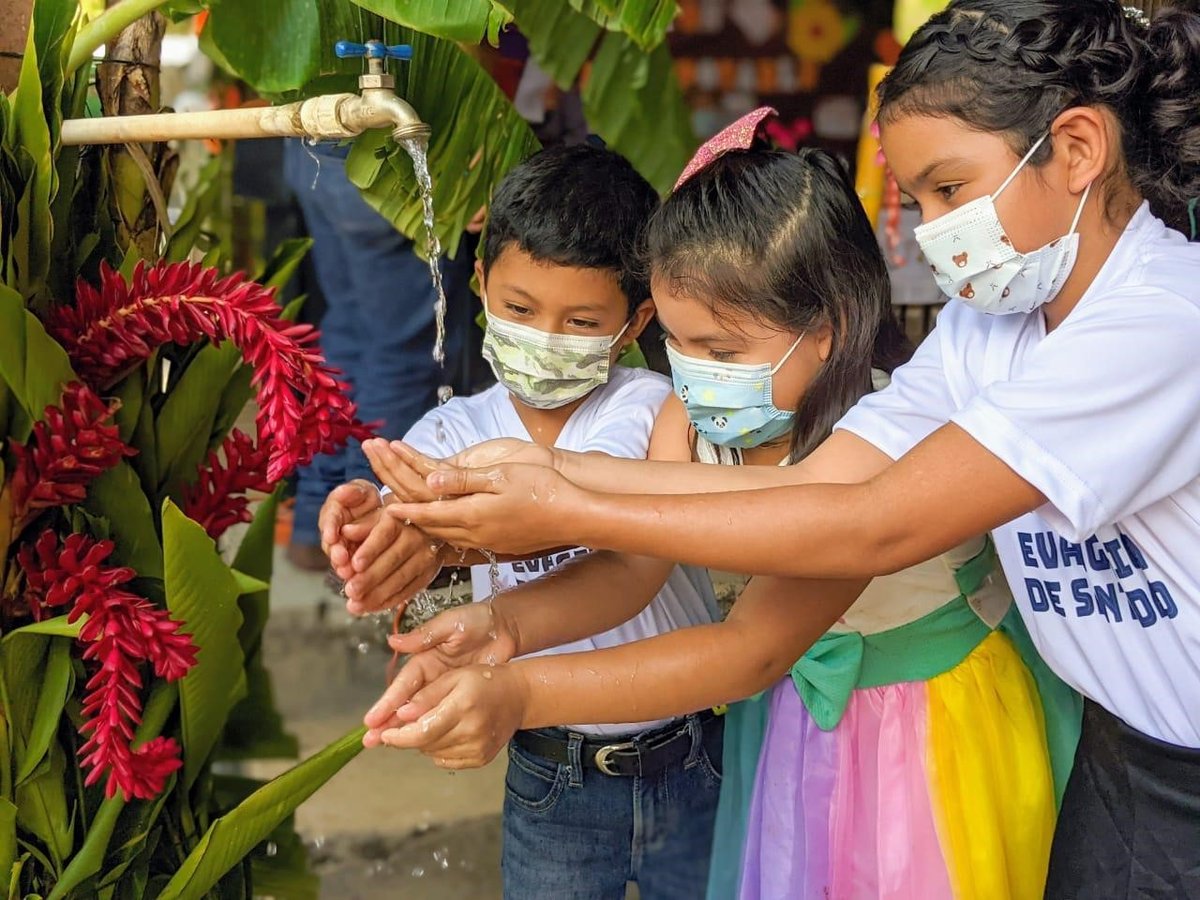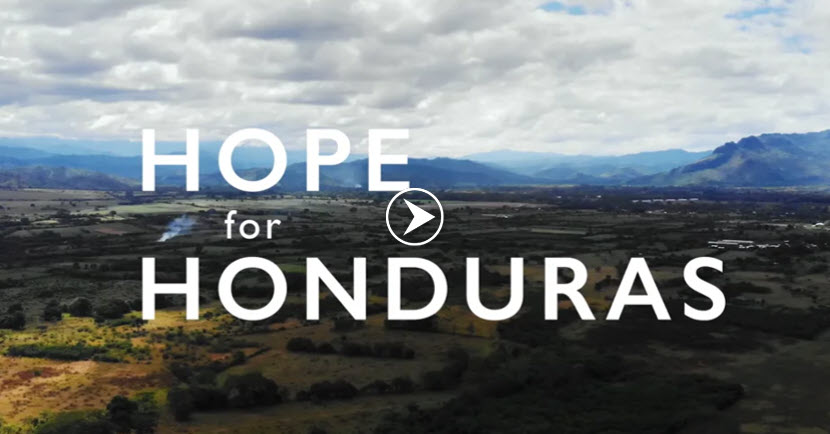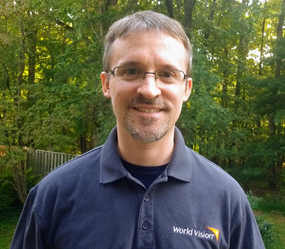|
Global Business Plan 2021-2025
Based upon the support of World Vision donors, February's newsletter announced a significant success in reaching 20 million people with clean water through our 2016-2020 Global Water, Sanitation, and Hygiene (WASH) business plan. We are now into the next 5-year business plan and this newsletter shares some of the highlights of that plan.
The Business Plan is built on World Vision's core values of people, accountability, leadership, and impact. These values are not new, but they are now incorporated into our business plan. We’re focused on building the capability of our 1,200 professional staff, of setting clear targets to hold ourselves accountable, to continue to lead the entire water sector towards ending the global water crisis, and demonstrating the transformative impact that we’re having in the communities where we work.
The scope of this plan covers 41 countries comprising 6 Latin American/Caribbean countries, 5 Middle East countries, 6 Asian countries, and 24 African countries. Our mandate at World Vision is to follow Jesus Christ’s example to serve the most vulnerable and 30 of these countries are classified as fragile or extremely fragile. This means that the people we serve are living in extreme poverty and their governments have not been able to provide adequate services like clean water.

We will build on our established track record of impact and as part of this 5-year plan, we commit to reaching 15 million people with clean water, 14 million people with improved sanitation, and 18 million people with improved hygiene. This will take us a significant step towards reaching everyone, everywhere we work with clean water between 2016-2030, some 50 million people. By the end of this business plan, we will have reached a cumulative 35 million people with clean water from 2016-2025 and need to reach an additional 15 million people with clean water in the 2026-2030 business plan.
The plan focuses on providing clean water, sanitation, and hygiene for households, communities, schools, and healthcare facilities. We’ll increase our level of service in schools and healthcare facilities reaching nearly 7,000 schools with water and hygiene and more than 3,000 healthcare facilities. Because we know that faith leaders can be very effective in changing people’s habits in sanitation and hygiene, we’ll train more than 30,000 faith leaders. And, to ensure sustainability and community ownership, we’ll work with communities to create more than 23,000 water committees.
Gender equity and social inclusion are emphasized as part of our plan with specific measures identified including providing nearly 4,500 schools with improved sanitation for girls including facilities to manage menstrual hygiene, providing 1,500 bathing rooms for women in postnatal care at healthcare facilities, and providing nearly 5,000 schools with improved sanitation for children with limited mobility. The long walk for water will be eliminated for more than 7.5 million women and girls as part of this plan.
This business plan will require a total global investment of $1 billion coming from multiple revenue streams. As measured in our previous business plan and included in our Global Water Fund offer, we will continue to be able to leverage every $1 invested by U.S. private donors to raise an additional $4 of funds – for a total impact of $5. In addition, we will continue to reach one new person with clean water every 10 seconds.
We have designed our plan around six ways to multiple the impact of our work:
- Strategic partnerships for capacity building, financing, and continue to improve program implementation
- Multi-sectorial approach enabling investments in our water programs to have greater impact across health, nutrition, food security, gender, economic development, education, and child protection
- Long-term commitment in communities of 10-15 years enabling continuity and sustainability
- Localized expertise through more than 1,200 staff members
- Global footprint as the leading nongovernmental provider of clean water
- Faith engagement leveraging our Christian identity in sensitive and appropriate ways to mobilize local religious leaders as advocates
We encourage you to download the Executive Summary, entitled “Our Road to Impact, 2021-2025”. In the Executive Summary, you can see the specific countries where we’re working, how we’re continuing our move towards solar-powered water systems and see some of our key partners.
Thank you for being part of this journey with us.
|
World Vision and Migration from Central America
Migration is an issue that brings lots of diverse opinions. The common ground on which everyone agrees is that we need to address the root causes of migration. That’s why World Vision has developed “Hope for Honduras” – a holistic effort that addresses the gang violence in urban areas and extreme poverty in rural areas. Gang violence, poverty and lack of opportunity, combined with frequent natural disasters, are the main reasons people are taking the risk to migrate. A critical part of our work to address migration in rural areas is to provide clean water, which is the basis for ending extreme poverty and creating economic opportunities.

This month 1,392 Hondurans in the community of San Miguelito rejoiced to receive clean for the first time.
The recent category five hurricanes IOTA and ETA were a double blow that took out 69 of the water systems provided by World Vision – a devastating setback. But because we involve the local communities in the creation of their water systems, many of these systems are almost completely repaired. Many community members spent time repairing the water systems as a higher priority than rebuilding their own homes! As you have conversations about the migration issue with your family, friends, and co-workers, please bring World Vision’s work into the conversation so people understand that we can successfully address the root causes of migration.
Here’s a video, prepared right before the pandemic hit, that shares our successful approach and is bringing Hope to Honduras.

|
Water Warrior Donor Call
One of the highlights of World Vision’s recent Water, Sanitation, and Hygiene (WASH) Forum was a presentation by Allen Hollenbach, Senior Technical Advisor for WASH, on how World Vision is using data collection and visualization.
As a follow-up, Allen will join us for a Water Warrior call at 9:00 am PT/noon ET on May 18th where he will explain how World Vision is using state-of-the-art technology including machine learning, GIS data, and high resolution satellite imagery to create high resolution population density maps. These maps are helping us to understand where unserved households are located in new and unprecedented ways, helping us to better monitor progress and plan new investments to reach everyone, everywhere we work with clean water. We will save time for your questions during our 30 minute call.

|